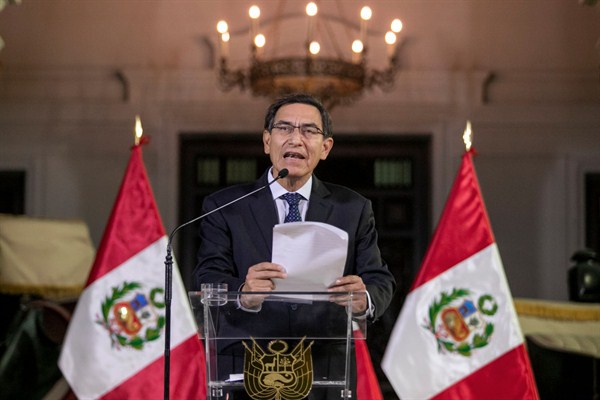There is no shortage of high-stakes, bitter political battles across the globe today. Few, though, can compete with the drama unfolding now in Peru, where a standoff between the president and the opposition-controlled Congress has suddenly erupted into an unprecedented constitutional crisis.
On Monday, President Martin Vizcarra dissolved Congress, and Congress responded by suspending Vizcarra on the grounds of his “permanent moral incapacity,” swearing in Vice President Mercedes Araoz as his replacement. No one is quite sure which move was legal. If the president’s dissolution of Congress is valid, then the Congress was not entitled to remove Vizcarra. If the president’s move was invalid, then the congressional move to depose him is in effect.
For one day, Peru had two people anointed president. But late Tuesday, Araoz announced she was resigning her post as vice president, along with the presidency that Congress handed her.

